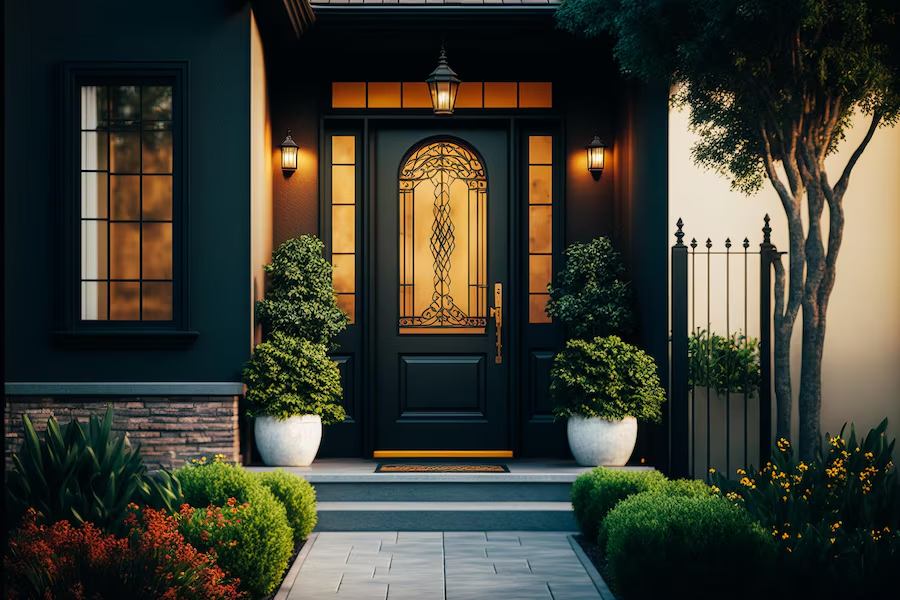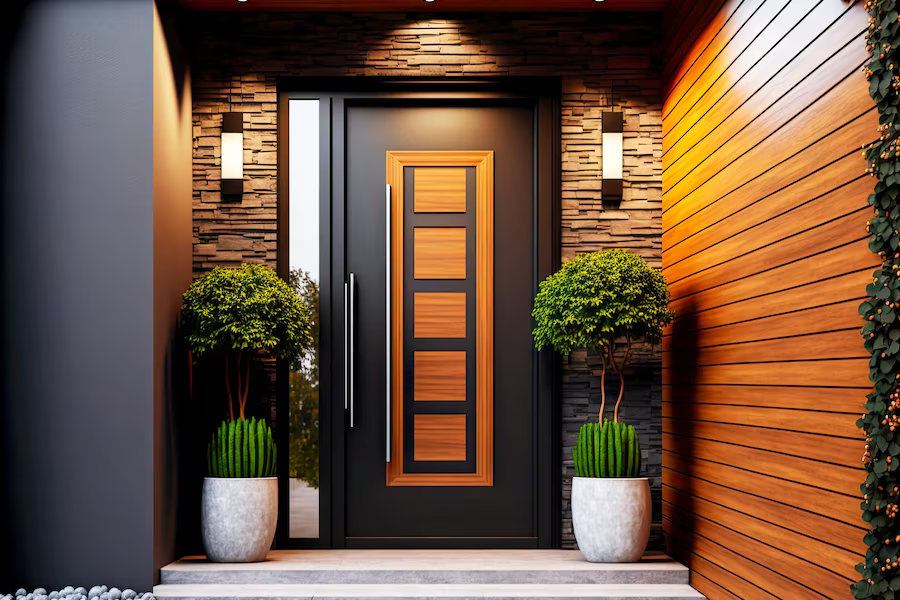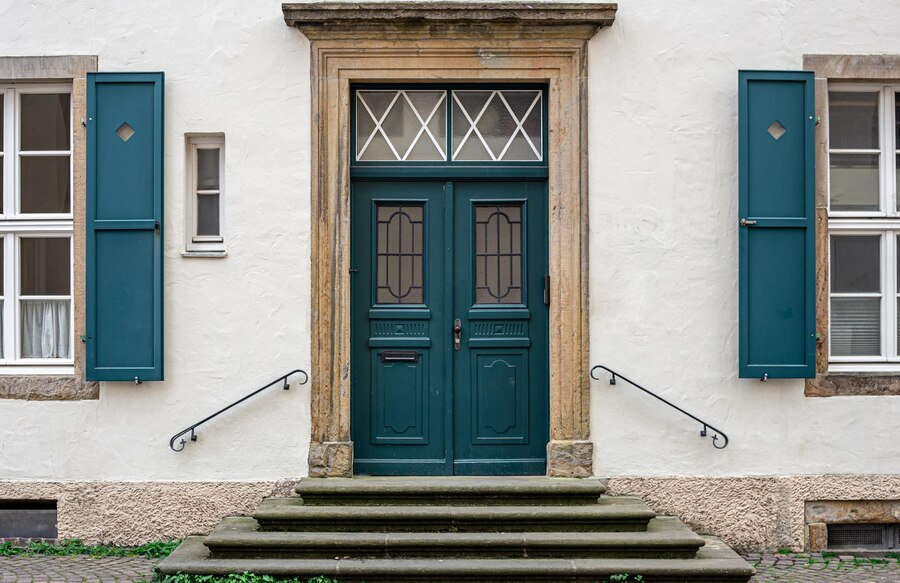
Doors: Enhancing Security with the Right Locks
When it comes to keeping our homes safe, we often focus on the big things—like alarm systems, surveillance cameras, and neighborhood watch programs. But one of the simplest and most effective ways to enhance your home’s security is often overlooked: your doors. More specifically, the locks on those doors.
In this comprehensive guide, we’ll dive into how the right locks can make a huge difference in your home’s security. We’ll explore different types of locks, their features, and how to choose the best one for your needs. Whether you’re upgrading existing locks or installing new ones, this guide will provide valuable insights to help you make informed decisions.
Understanding Door Locks: The Basics
Before diving into specific types of locks, it’s essential to grasp the fundamental purpose of a door lock: to act as a barrier against unauthorized entry. At its core, a door lock is designed to provide security and protect your home from intruders. However, the effectiveness of a lock can vary widely based on its design and mechanism.
Different locks operate in distinct ways, and understanding these differences can significantly impact your choice of lock. For instance, some locks are designed to resist forced entry, while others offer convenience and ease of use. Knowing how each type functions will help you select the most suitable option for your security needs.

Types of Door Locks
Deadbolt Locks
Deadbolt locks are often considered the gold standard for residential security. Unlike spring locks, which can be easily manipulated with a credit card or similar tool, deadbolts offer a solid, immovable barrier. They come in single and double-cylinder variations.
- Single-Cylinder Deadbolts: These have a keyhole on the outside and a thumb turn on the inside. They’re easy to use and effective, but they can pose a risk if someone breaks a window near the door and reaches in to unlock it.
- Double-Cylinder Deadbolts: These require a key on both sides, providing added security against break-ins through broken windows. However, they can be inconvenient during emergencies since you need a key to exit.
Knob Locks
Knob locks are commonly found on residential doors and are typically used in conjunction with a deadbolt for added security. While they are convenient and inexpensive, they are not as secure as deadbolts on their own. The main issue is that they can be easily bypassed by force or by removing the screws.
Lever Handle Locks
Lever handle locks are similar to knob locks but feature a lever handle instead. They are often found in commercial settings but can also be used in homes. They are easier to operate, especially for those with mobility issues, but like knob locks, they are usually paired with a deadbolt for better security.
Smart Locks
Smart locks are a modern solution for home security, allowing you to control access via your smartphone, tablet, or voice commands. They can be integrated with home automation systems and offer features like remote access, temporary codes, and activity logs. While they offer convenience and advanced features, they also depend on technology, which can sometimes fail or be hacked.
Chain Locks
Chain locks are often used as an additional layer of security, providing a small opening while still keeping the door secured. They are commonly used on interior doors or as a secondary lock on exterior doors. However, they are not the most secure option as they can be easily bypassed.
Factors to Consider When Choosing Door Locks
Choosing the right door lock involves more than just picking a type. Here are some factors to consider to ensure you’re making the best decision for your home.
Security Level
The primary consideration when choosing a lock should be the level of security it provides. Deadbolts are generally more secure than knob or lever handle locks. When opting for smart locks, ensure they have strong encryption and a good reputation for security.
Door Material
The material of your door can impact the effectiveness of different locks. For example, a metal door may require different mounting techniques compared to a wooden door. Ensure that the lock you choose is compatible with the material of your door.
Ease of Use
While security is crucial, so is ease of use. A lock that is difficult to operate can be frustrating, especially in an emergency. Consider how easy it is to lock and unlock the door for everyone in your household.
Installation
Some locks are easier to install than others. If you’re planning to install the lock yourself, choose one that comes with clear instructions and requires minimal tools. For more complex installations, it may be worth hiring a professional locksmith.
Budget
Locks come in a wide range of prices. While it might be tempting to go for the cheapest option, investing in a high-quality lock can provide better security and durability. Balance your budget with the level of security you need.
Upgrading Your Home’s Security
If you’re considering upgrading your home’s security, replacing old or inadequate locks is a great place to start. Here’s how to approach the process:
Assess Your Current Locks
Begin by evaluating the condition of your existing locks. Determine if they are outdated, damaged, or compromised. Assess whether they meet your current security needs and make a detailed list of which locks require replacement or upgrading.
Research Options
After identifying your needs, research various lock options available in the market. Read customer reviews, seek recommendations from trusted sources, and compare the features of different locks. Ensure to check for certifications and standards, such as those from the American National Standards Institute (ANSI).
While some locks are simple to install on your own, others might require professional expertise. Hiring a skilled locksmith ensures that the lock is installed correctly, operates smoothly, and is compatible with your specific security needs. They can also offer valuable advice.
Test the Locks
Following installation, rigorously test each lock to ensure it functions correctly. Confirm that you can easily lock and unlock the door without any issues. Regularly maintain the locks to ensure they continue to perform well and provide the level of security you need.
Additional Tips for Enhancing Home Security
While upgrading your locks is an important step, there are other measures you can take to further enhance your home’s security.
Use Multiple Locks
For enhanced security, consider installing multiple locks on exterior doors. Combining a deadbolt with a knob lock or a smart lock can create a more secure barrier against unauthorized access, adding an extra layer of protection.
Reinforce Door Frames
Even the most advanced locks can be ineffective if the door frame is weak. Strengthen your door frames using metal reinforcement plates or other sturdy materials to make them more resistant to forced entry and improve overall security.
Install Peepholes
A peephole allows you to view visitors outside your door without opening it. This small, affordable addition helps you confirm the identity of those at your door, enhancing your ability to avoid potential security threats.
Keep Spare Keys Secure
Refrain from hiding spare keys in obvious places like under doormats or flower pots. Instead, entrust spare keys to a reliable neighbor or use a secure key lockbox to prevent unauthorized access to your home.
Regularly Update Security Measures
Security technology and practices are continually advancing. Periodically review and update your security measures to stay ahead of new threats and ensure your home remains protected with the latest innovations and best practices.
Peepholes: A Simple Solution for Safer Door Access
Peepholes are a straightforward yet effective solution for enhancing door security. By allowing you to see who is outside without opening the door, they provide a crucial layer of protection. This simple device helps you verify the identity of visitors, allowing you to assess whether it’s safe to open the door. Installing a peephole is an easy and affordable way to increase your home’s security, particularly in situations where you may be unsure about the person at the door.
Additionally, peepholes are beneficial for preventing potential threats and avoiding unwanted encounters. They are especially useful for families, the elderly, and anyone concerned about safety. The peace of mind provided by this small security feature is well worth the minimal investment.
Conclusion
Enhancing door security with the right locks is crucial for home protection. Utilizing multiple locks, reinforcing door frames, and installing peepholes can significantly improve security. Combining a sturdy deadbolt with a knob lock or smart lock provides extra protection, while reinforcing door frames helps prevent forced entries. Peepholes allow for easy verification of visitors before opening the door, contributing to overall safety. Regular updates to security measures ensure protection against evolving threats. For expert advice and quality products to boost door security, contact EZ Window Solutions of Beachwood at (440) 773-4396. Safety remains a top priority.







Recent Comments